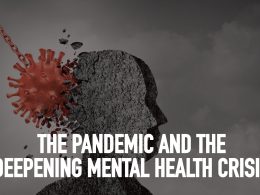By Fiona Ryan
Dopesick hit streaming platforms in November and has shocked audiences with its broadly factual take on the machinery behind OxyContin and the wide scale misery caused by addiction to the drug.
Dopesick chronicles the rise of the so-called “miracle drug”, from its trail launch in rural mining towns in the U.S., to the extensive marketing campaign, to the seedy influence Purdue Pharma was able to exert on agencies tasked with regulating medication. Purdue Pharma, through its army of salespeople and access to unlimited funds, successfully obscured the addictiveness of OxyContin.
The show originates from the 2018 non-fiction book, Dopesick: Dealers, Doctors, and the Drug Company That Addicted America by journalist Beth Macy, who chronicles the movement of the US ‘Opioid Crisis’ from its cradle in Appalachia through the viewpoint of fictionalised characters based on Macy’s own research.
A destructive addiction
Dopesick begins in 2005 following an active court battle against Purdue Pharma, where doctors are being quizzed on their experience of sales representatives pitching OxyContin, describing their key selling point as the claim that the drug has a less than 1% addiction rate. The scene ends with one of the key characters traumatically informing the court, with a faraway gaze, of his disbelief at how many of his patients are now dead.
The story spans a decade, from 1996 to the landmark court case against Purdue Pharma in 2005. It’s told through the viewpoint of five main characters: a rural small-town doctor in the heart of Appalachia, a young miner who is prescribed OxyContin to deal with a workplace back injury, a Drug Enforcement Administration agent, a Purdue Pharma sales representative, and the federal prosecutors tasked with building a case against the billionaire Sackler family behind the drug.
Dopesick is primarily the story of the psychopathy of capitalism, and the systems in place to protect big business at the expense of working-class and poor people.
The role of advertisement
The Sackler family, owners of Purdue Pharma, are the clear villains of the story. While there is dramatisation within the series, the main horror of the Sacklers comes from the reality of their role in creating and maintaining the prescription medication epidemic plaguing the U.S. This stems from the 1980s with their creation of MS Contin, originally created for hospice care to facilitate people to die at home and off sedative morphine drips.
The family head, Arthur Sackler, is renowned as the father of American medical advertisement as it stands today.
Before the Opioid Crisis, the U.S. had a ‘Valium Crisis’. According to the book Empire of Pain, by 1975 as many of two-thirds of the adult population had a Valium prescription, marketed as a miracle drug and promising no risk of addiction. Arthur Sackler was the man behind Valium, and he spearheaded the concept of marketing not to consumers, but to doctors. He knew people trusted their doctors and would take whatever medication they recommended.
Seeing that it was doctors that controlled the prescriptions, Sackler moved to inundate doctors with advertisements, from medical journals to their own offices. The ads and literature would cite studies directly funded by the companies themselves. Doctors were sent on ‘information weekends’ in five-star golf resorts, a playbook that would be copied almost to the word by his nephew Richard Sackler and OxyContin. Arthur Sackler became one of the main marketeers for Pfizer, which represented the great leap needed for him to build his own empire in due course.
Lies and deceit
With the creation of OxyContin, a drug twice as powerful as morphine, the Sacklers’ wealth increased exponentially, with the family using philanthropic donations as a cover for the rampant profiteering and the manipulation of healthcare services they were carrying out to spread the use of their drug.
Key to the Sacklers’ and OxyContin’s success was a one-time gifted label from the Food and Drug Administration (FDA) confirming the drug was addictive in less than 1% of cases, based on a decades old letter sent to a newspaper by a researcher who was simply talking about a small sample size of patients using general opioid medication. The FDA accepted this “research” without having seen it as self-reported by Purdue and allowed the label to continue.
A 2020 case study by the AMA Journal of Ethics focused on the long-term systemic failures of the FDA to regulate opioid medication, as well as conflicts of interest never accounted for. The report noticed the close relationship between the agency officials responsible for opioid oversight and opioid manufacturers. Two FDA workers directly responsible for the approval of Purdue’s oxycodone application both subsequently left the FDA to take positions at Purdue itself.
The FDA label became the rallying cry of the Purdue sales representatives, sent out to every rural town GP, pharmacy and hospital intent on selling a revolutionary drug that would improve the quality of life of millions of Americans.
Record overdoses
Instead, according to the Centres for Disease Control (CDC), prescription opioid medications were responsible for nearly 500,000 deaths in a ten-year period. 2020 marked the deadliest year of opioid overdose deaths recorded in the US, with 93,000 people dying from drug overdoses in 2020 according to the CDC, a 29.4% increase from the 72,151 deaths in 2019.
One issue the show successfully tackles, which is often ignored, is the connection between opioid prescription use and heroin abuse.
The American Society of Addiction Medicine states that four in five new heroin users initially became addicted to prescription painkillers. Ninety-four percent of respondents to a 2014 survey of people in treatment for opioid addiction said they chose to use heroin because prescription opioids were “far more expensive and harder to obtain.” Given that OxyContin was specifically trailed in hugely under-resourced communities in Appalachia and Maine, the high medication costs and absence of treatment options led thousands further down the path of addiction.
Grassroots fightback
One of the most interesting parts of the series is its focus on the grassroots attempts by affected communities to organise and push back against the rising Opioid Crisis. The series covers the true story of the community coalitions that saw first hand the crisis being denied by both Purdue and state officials, and who ultimately spearheaded the case against Purdue Pharma. Many of the activists involved had previously taken part in environmental activism against the fossil fuel industry, and armed with this experience in dealing with big corporations, began to focus on the Opioid Crisis as a new major threat to their communities. One of the key organisers, Sr. Beth Davies, was a longtime activist who founded the Virginia Coalition alongside local doctor, Dr. Art Van Zee.
The focus of much of the campaigning around opioid addictions was on the absence of specialised recovery programmes. Many of the programmes available focused on alcohol and non-opioid addiction. Most of the available rehab spaces were not fit for purpose, nor had the expertise to address the profound impact opioid addiction wrought on the body and brain. As such, there has been decades of activism trying to pressure Purdue and other pharmaceutical companies to actively fund the required treatment centres. Many of the current addictions centres are run and managed by activists themselves, many who have lost relatives to overdoses or in recovery themselves
Insidious role of private healthcare
‘Waging NonViolence’, a people-powered news organisation, told the recent story of Nan Goldin, a 64-year-old photographer in recovery from addiction to OxyContin. Goldin is a member of Prescription Addiction Intervention Now, or PAIN, which launched a petition targeting Purdue Pharma. The group continues to campaign, and has gathered 25,000 signatures to its petition demanding Purdue fund recovery services as well as public dispensers of Narcan, a life saving medication that can prevent drug overdose.
The primary delivery of addiction services throughout more hard-pressed rural areas remains activists and religious groups. Privatised healthcare in the U.S. makes the delivery of effective public health measures difficult, if not actively impossible given the commodification of people’s pain in a large scale way by the medical industry.
While Dopesick depicts a grim and striking portrayal of the destruction of working-class communities, and despite the accurate portrayal of the nefarious Sacklers, the show does not continue much past the initial court case and unfortunately never deals with the Sacklers’ immunity from consequences. It does not show, for example, that no Sackler was prosecuted on any felony charge, only misdemeanours.
It does not show how Richard Sackler, the main instigator of the development and sale of OxyContin, continues to deny any role played by his aggressive advertisement campaigns and active falsehoods relating to the effective addictiveness of the drug, leading to widespread prescription by doctors. Washington State Attorney, General Bob Ferguson, no radical, described the settlement of the case as follows:
“The Settlement Plan allows the Sacklers to walk away as billionaires with a legal shield for life”.
Seize the resources of big pharma
Unfortunately, the Sacklers and their fellow peddlers of misery and death will continue to live their lives of privilege and luxury, while the working class is further brutalised, as long as the rotten system of capitalism is maintained and the right of a tiny few to profit over the greater good of humanity as a whole is prioritised.
In 2021, in the midst of a global pandemic, we can see no lessons were learned. Big pharmaceutical companies protect vaccine patents fiercely, aided by political representatives and institutions that fight for their interests. Meanwhile, 50% of the global population, most living in the Global South, are left abandoned while astronomical profits are accumulated. Only a socialist transformation of society can eliminate the profit motive responsible for so much pain and death, in the U.S. and throughout the world. The resources and assets of big pharma companies that have fueled the crisis outlined in this review must be seized and taken into democratic public ownership. Drug production should be based on treating human ailments and diseases not perpetuating them.
The Sackler family are only a symptom of the disease that sees society organised by those in control who seek permanent, exponential growth in their profits, regardless of the cost to the world.












